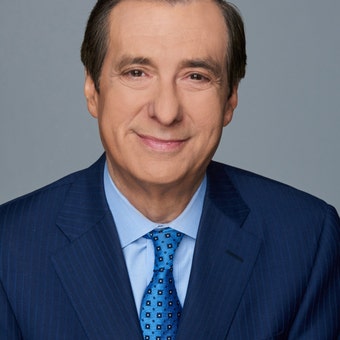Top takeaways from day two of Senate's Trump impeachment trial
FOX News contributors Trey Gowdy, Kenneth Starr and K.T. McFarland give their thoughts on 'The Story'
It turns out the star witness for the Democrats was Donald Trump.
On the impeachment trial’s second day, the former president’s words and tweets took center stage as the House managers argued that his constant efforts to "stop the steal" led directly to the Capitol riot.
In a sense, they were attempting to prove their case yesterday with material that has been out there in public view, simply by pulling it all together.
And they capped the presentation with previous unseen security footage of the riot, and police radio communications, that were absolutely chilling because they prove how close the country came to a massacre under the dome.
So the Democrats won the day on optics, but not necessarily on the law or the Constitution. Of course, Trump mounted a relentless crusade after Nov. 3 to prove, without evidence that could convince any court or his own Justice Department, that the election was rigged. We all saw that with our own eyes.
But whether he wanted his supporters to commit violence during the Jan. 6 insurrection is a much more difficult question.
What was striking, though, now that we’ve all had three-week break from Trump’s media dominance, was the sound and the fury of him as president, the familiar New York cadence insisting again and again and again that he was robbed.
VIDEO OF CAPITOL CARNAGE DEFINES TRUMP TRIAL BUT WON'T CHANGE OUTCOME
We had all grown numb, critics and supporters alike, to his fiercest rhetoric. But here he was again, talking about fraud, talking about how he would never give up, never surrender, in contesting Joe Biden’s apparent victory.
The House managers began the timeline months before the election, as the president thundered against mail-in ballots and how "the only way we can lose" is if the other side cheats. Then the post-election barrage insisting he had achieved a "landslide victory." Then urging his supporters to come to Washington on the day Congress would certify the results, saying things would be "wild."
The Democrats also showed Trump attacking Republicans who wouldn’t side with him as weak RINOs, and highlighted the pressure call to Georgia’s Republican secretary of state to "find" him more than 11,000 votes. That phone call just became the subject of a criminal probe in Georgia. They recounted how he once told the Proud Boys to "stand back and stand by."
And, for good measure, the managers played up the way Trump tried to push Mike Pence—who would later take shelter in the Capitol—into refusing to accept the Electoral College vote.
Finally, there was his rally speech to supporters on the day of the siege. As manager Jamie Raskin put it, "He told them to fight like hell, and they brought us hell that day."
It was effective political theater. But did it prove that Donald Trump was, as the managers contend, the "inciter-in-chief"? Did he "fan the flame of violence," as Del. Stacey Plaskett put it?
In other words, when Trump released a video during the violence, do we focus on the "go home" part or when he told the protesters "we love you. You’re very special"?
Did Trump flirt with violent supporters, or actively encourage them to break the law?
Late in the afternoon, viewers heard the crackling audio as Capitol police officers called for help: "They’re throwing metal poles at us." "They’re starting to throw explosives." "This is now effectively a riot."
And what was gripping about the security-cam and body-camera footage is that it showed what the assault looked like from the inside, as lawmakers ran to safety while the criminals, some of them armed, stormed the hallways, some looking for Pence or Nancy Pelosi.
SUBSCRIBE TO HOWIE'S MEDIA BUZZMETER PODCAST, A RIFF OF THE DAY'S HOTTEST STORIES
It was a prosecutorial indictment, as Trump’s lawyers did not get a turn during the long afternoon. They will undoubtedly denounce the violence and say the former president never intended to unleash such a siege, or simply repeat that the trial is unconstitutional.
But anyone who watched yesterday will not forget what they saw. And we, as a country, should never forget.


